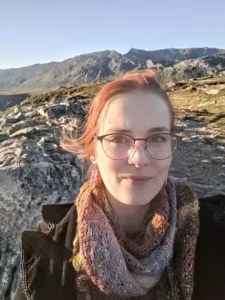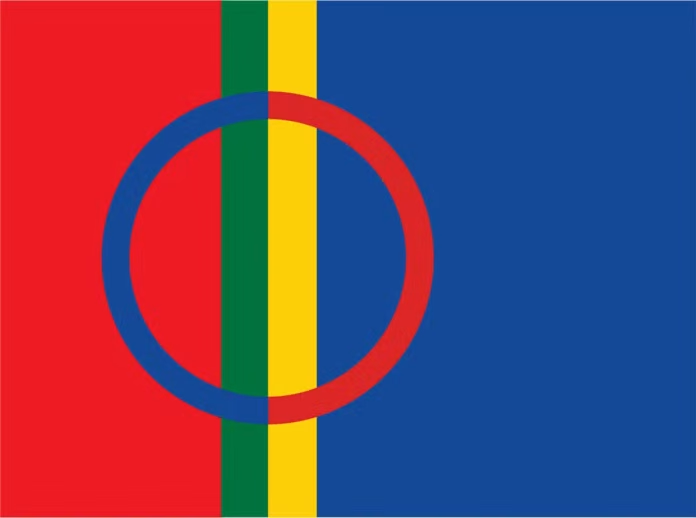Developers in Norway have created a Lule Sami speech synthesizer with three synthetic voices. Behind the project lies Divvun, a unit of the Norwegian Arctic University (UiT) which works to develop and further develop Sami language technology and practical aids.
And with the launch, we are one step in the right direction and it is a big development that gives me hope for the future, says Inga Lill Sigga Mikkelsen.
– I have worked and studied Sami for many years now. It feels meaningful not only to do research for our own sake, but also to create a tool that will benefit the Sami community, says Inga Lill Sigga Mikkelsen, engineer at Divvun.

Speech synthesis is a function that reads text on your digital device. It turns text into speech and is therefore also often called just text-to-speech. With the help of speech synthesis, you can now listen to what is written in Northern and Lule Sami. This is an important help for people with reading and writing difficulties or synproblems.
Inga Lill Sigga Mikkelsen herself speaks Lule Sami at home with her children, and she says that the reading and writing language of Lule Sami has only a short history.
– Lule Sami as the language of instruction is only 40 years old, I was only one of the first to go to school in Lule Sami. My dad always talked it at home but can hardly read or write fluently.
It is problematic to count the number of people who speak Lule Sami, it is estimated that they are between 800 and 3000 depending on the definition.
Has survived the transformation
We have already started communicating verbally with the machines we surround ourselves with, and now that the computer can speak Sami, the Sami language is seriously entering the age of speech technology.
– Here, I already talk to Siri on my iPhone, but Sonos speakers and in the car, in Norwegian and English. It’s a little scary considering that the Sami languages have to be used in order to be heard in the future, but then these devices make me speak other languages in my own home. Therefore, Lule Sami speech synthesis is a big step in the right direction and a development that gives me hope for the future, she continues.
Three synthetic lulesamiska voices
Sander Andersen, Sigmund Johnsen and Britt Inger Sikku have contributed to the project by lending their voices to the Swedish speech synthesis. In speech synthesis, you can choose between which artificial voice you want to hear, so when the computer can now speak Lulesamiska, it will sound like one of these three.
– Sander, Sigmund and Britt Inger have all done important work for the Lule Sami language, and now their voices will follow us into the future, and thus also be heard and used by new generations of Lule Sami speakers, says Mikkelsen. New version of Northern Sami speech synthesis The first Northern Sami speech synthesis was published in 2015 in collaboration between Divvun and Acapela. Now this has been improved with a new version. The new version has improved sound quality and pronunciation, and it’s nicer to listen to.

Useful for language learning
For Divvun, voice technology is an important investment area, and during the fall, Divvun will also launch a southern voice. Divvun is also working on speech recognition, that is, the computer writes what you say, for both North, Lule and South Sami. Katri Hiovain-Asikainen has worked with the development of the speech technology tool.
The new speech synthesis has been developed entirely with open software and new code has been developed and owned by the Divvun group and UiT. Divvun’s overall tasks are to develop and maintain similar language technology tools for the Sami language community, including spelling checkers, grammar checks, keyboards, dictionaries and other digital and web-based tools. Most of Divvun’s tools are freely available as open source. Divvun is financed by the ministry for municipalities and districts (KDD).
You can find the global goals in Sami here.
Samerna is a national minority in Norway, Sweden and Finland. Sami varieties have the status of a minority language in Sweden and parts of Finland and Norway.
The International Decade for Indigenous Languages runs from 2022 to 2032. Of the world’s total population, 6% are considered indigenous, but the number of languages spoken by indigenous people is significant. An estimate of the approximately 6,700 languages spoken in the world is more than 4,000 native languages. The International Year of Indigenous Languages aims to protect the rights of indigenous peoples to preserve, revitalize and promote their languages, while integrating linguistic diversity.






